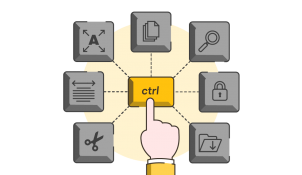When PowerPoint graph slides are designed there are several reasons why they are not as effective as they could be. As a result the audience has to work really hard interpreting the information on the slide, reducing their ability to listen to the presenter. It’s worth understanding these pitfalls and what you can do to avoid them.
Too much information
Having densely populated charts or multiple graphs on a single slide can cause confusion. With the audience trying to relate what the presenter is saying back to the correct graph or data point, it’s easy for confusion to set in, and the effectiveness of the data can be lost.
Unreadable text
Small text cannot be seen, so your audience will have no way of knowing which data point is which. Also, it’s much harder for us to read vertical text as the letters don’t flow side by side. In both instances it means the audience needs to concentrate harder on the slide content – and less on the presenter – to understand the message.
Poor colour use
When it comes to the use of colour on our slides, it’s important that we have strong contrasts, otherwise it’s very difficult to understand differences in data. When considering which colours to use in graphs and charts, your brand colours should be taken into consideration. For example, if you have a data point representing your company, why not match it to your logo’s colour scheme. If there are other companies’ data included, choose a colour that is not associated with your brand. This shows clear differentiation and allows the audience to understand what they are looking at far easier.
Legends
When we use legends in graphs, the audience have to look back and forth at the graph and the legend. This makes it difficult to differentiate one information point from the next. Use labels instead; allowing the audience to look at the data directly and understand exactly what it is.
No animation
If a graph is static it reveals all of the information the presenter is going to discuss straightaway. This can cause the audience to disengage from what the presenter is saying, meaning they don’t listen to the story behind the data and assume they have interpreted the data correctly. Inevitably this means they have a different understanding of the data than the point the presenter was trying to make.
For more PowerPoint graphs and chart help, head over to our resources page and get yourself a free video.
Leave a comment





One useful further tip is to use a heading that really explains the chart.
Something like “Q3 was our best in sales due to the new software roll out” rather than “Sales”.
Really good blogs from your team!